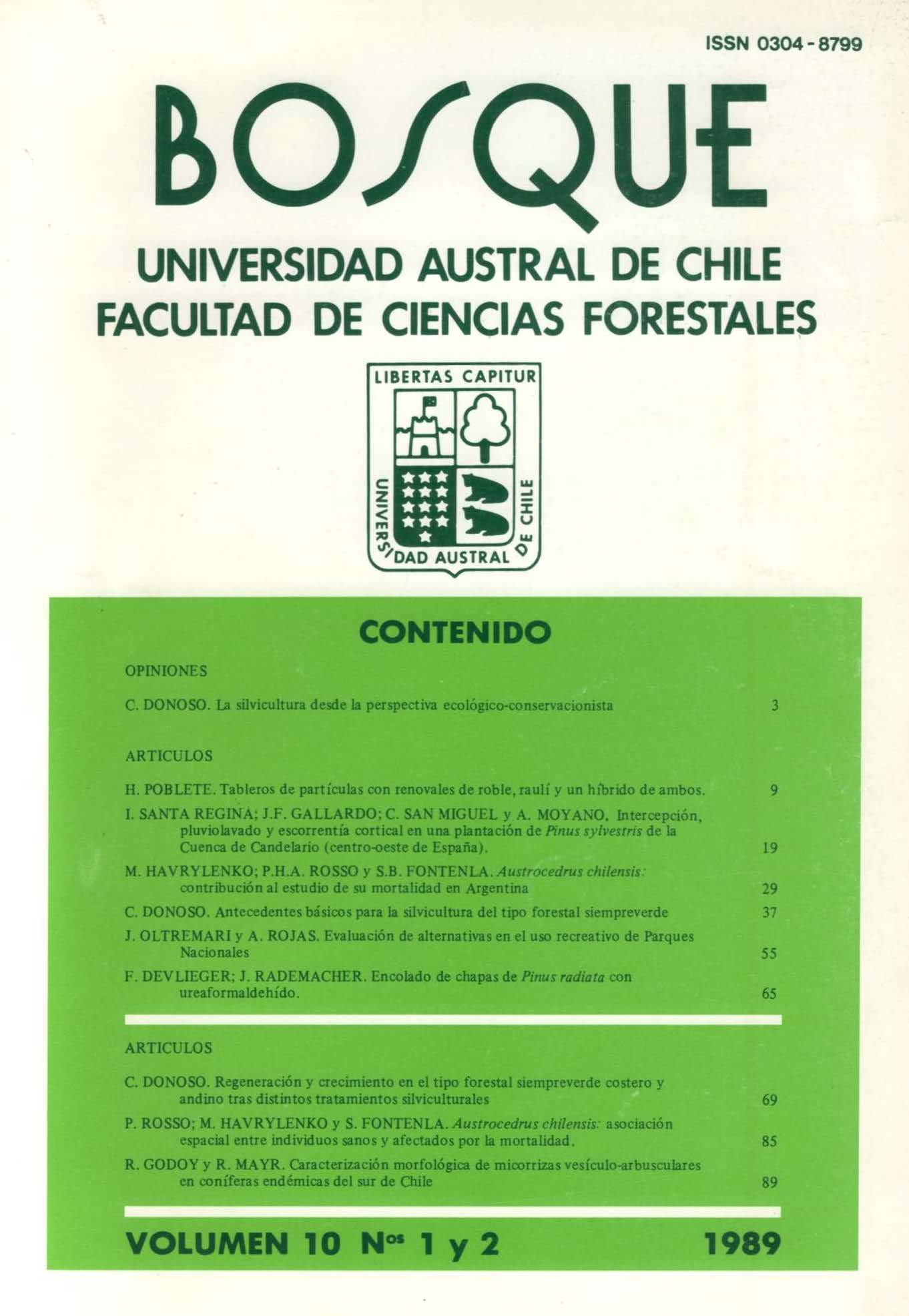Regeneration and growth in the evergreen forest type after cutting
Main Article Content
Abstract
In virgin stands of the evergreen forest type, in the Coastal and Andean Mountains of Chile, trials for 4 silvicultural treatments and control plots were conducted. Results of regeneration were evaluated over a period of 5 years. Evaluation were done on the basis of testing intermediate cuttings. After 5 years, conclusions derived from the results indicate that regeneration and plant growth are better in the Andes than in the Coastal Mountains. In the Andes, with densities of more than one million saplings per hectare, a mean height growth of 20 to 60 cm per year is reached by almost every species. Clearcutting, in strips of variable width is suggested as a silvicultural treatment for forests. Regeneration in the Coastal Mountains is less abundant, more irregular in spatial distribution and with less vigorous growth due to unfavourable interactions of climate and soil. Here Eucryphia cordifolia appears as the most aggresive species, because of its rapid growth and abundant regeneration by root-sprouting. Clearcutting in narrow strips is recommended for this kind of forest; strips need to be oriented in such a way that regeneration is protected from excessive solar radiation and northwest wind. The effects of exploitation together with the elimination or arrangement of waste material are enough to prepare the seedbeds.

